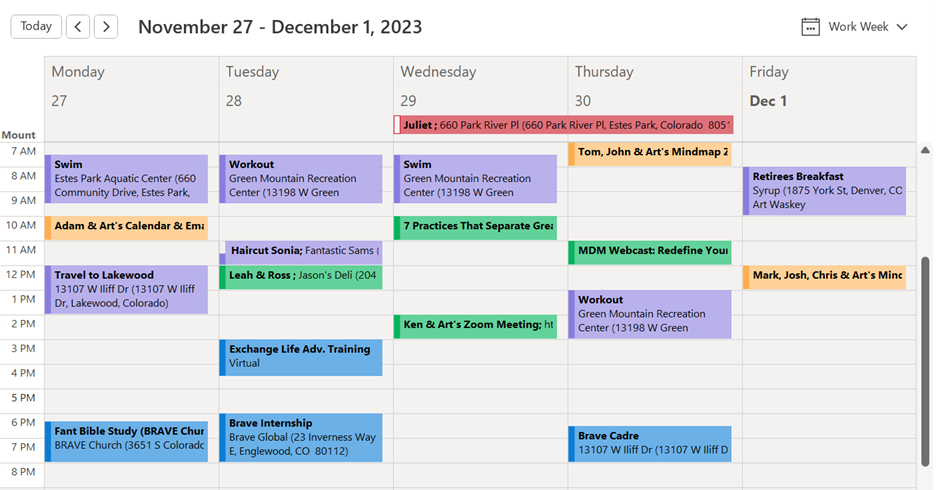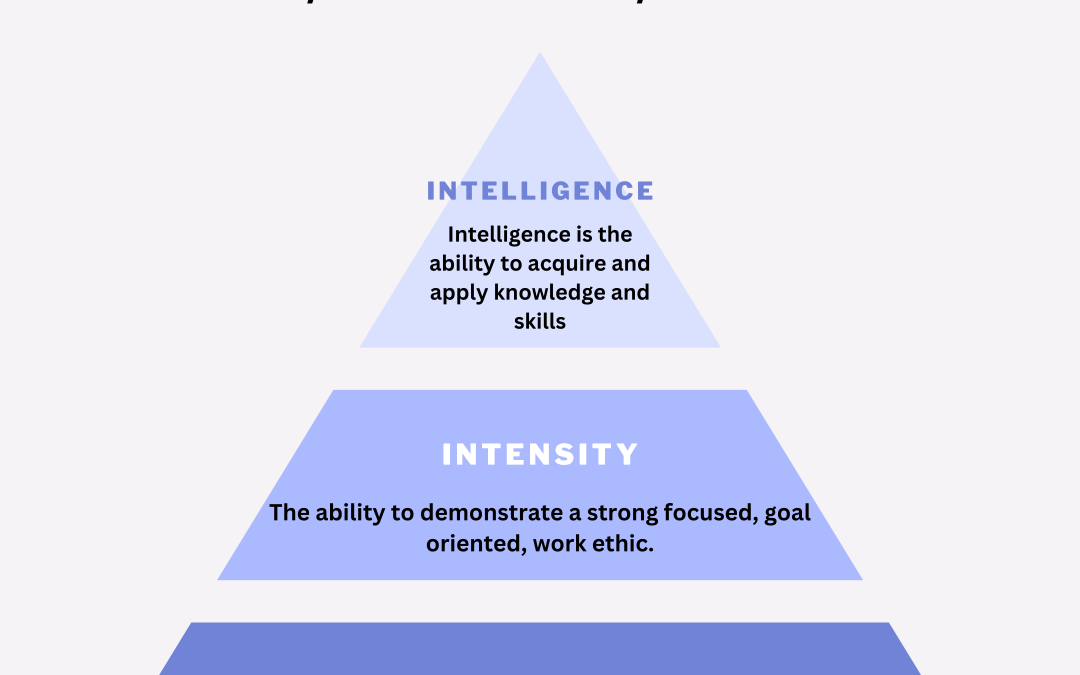
by Art Waskey | Apr 24, 2024 | Art of Sales Weekly, Featured
A full mailbox is a time sink. Many people assert that checking emails is the biggest time-waster among all management tools. This makes it difficult to find important ones that are waiting for a response. To better manage your email and keep clutter at bay, keep your mailboxes empty.
A radical idea
To those of us who check our email every time the phone pings an alert or the computer signals you’ve got mail, this will sound like a radical idea. To manage your time better and achieve an empty Inbox and Sent Box, I suggest that you open your email no more than twice per day. Review it once in the morning and once in the afternoon. Use one of these two times to clear your emails.
File, route, discard
To become more efficient and save considerable time, all new emails should be read with the aim of filing, routing, or discarding them.
- Filing an email signifies that after reading it, you would like to keep it, as the message might be valuable to access in the future.
- Routing is applied to an email that requires follow-up, or one that you need to read at a future time.
- Discard is used for emails that are irrelevant or require no future action.
The Sent Box too!
I consider an email processed only when the Inbox and Sent Box are empty since a copy of the sent emails appears in the Sent Box. Additionally, I recommend going directly to the Sent Box as soon as you send an email. File, route, or discard that email right away.
Careful Management
The careful management of emails can prove invaluable to making your business more efficient. In conclusion, a well-organized email system allows you to access information as you need it and eliminates the clutter that can slow that process down.
Get tips and tricks like the above in The Art of Sales books. Or subscribe to the FREE monthly articles here.

by Art Waskey | Apr 17, 2024 | Art of Sales Weekly, Featured
The digital calendar
Today’s digital calendars offer highly effective calendar systems that greatly improve our ability to manage time. When properly used, a digital calendar serves as a planner, confirmed appointment implementer, and history tracker. Whether you use iCalendar, Google Calendar, or Outlook Calendar, their functionality is the same.
Secrets to success
Here are three ways to make your digital calendar more effective.
- Develop a consistent practice of setting appointments when interacting with people. Make it a habit to always set your next meeting before your current session ends. This ensures your business momentum continues. Setting appointments can be automated. For example, when a meeting ends, you can immediately set up the next meeting date and send a confirming email via your digital calendar app.
- Be sure to set aside time to work on your projects. Your appointments will not be productive if you are not prepared. It is important to allot time in your calendar to address your projects and proposals.
- Prioritize. With digital calendars, you also can note priorities. Digital calendar applications allow you to identify the importance of a meeting by a color code. When a client of mine introduced color coding to his calendar, he was able to recognize key meetings and found he became more efficient at planning future meetings.
The effective calendar
An effective calendar system is the underpinning of a well-managed business. Develop a consistent habit of setting appointments when interacting with people and be sure to set aside time in your calendar to work on projects.
Get tips and tricks like the above in The Art of Sales books. Or subscribe to the FREE monthly articles here.

by Art Waskey | Apr 11, 2024 | Art of Sales Weekly, Featured
Generating insights
As I age, I find myself taking more time with a friend or colleague over a cup of coffee. Gone are the “all business” meetings which allowed little time for reflection, contemplation — or even finishing that cup of coffee. The longer gatherings that I now enjoy often result in generating important insights into our world. Recently, an associate shared a meaningful 3-tiered word pyramid concept with me. The wide base of the pyramid is supported by integrity, the middle is filled with intensity, and at the top you find intelligence. This is an important structure on which to model your career.
Integrity
A successful career is built by establishing a foundation of personal integrity. I can recall people I knew early in my work experience who lacked trustworthiness. Over time, those individuals disappeared. Their reputation preceded their ability to stay employed in my trade. To be able to always act with integrity it is important to understand and address your weaknesses and blind spots as these can erode your foundation.
Intensity
With a reputation of trustworthiness as your base, you must demonstrate an intensity to work. Success comes to those who have a strong work ethic. You need to demonstrate a focus on achieving goals. First, determine what you want, then lay out a plan. Do not neglect other aspects of your life, like family responsibilities, in pursuit of your business goals. You could end up with millions of dollars, but you might also experience loneliness and end up divorced. While intensity is essential to success, misplaced it can lead you in the wrong direction.
Intelligence
Intelligence is the ability to acquire and apply knowledge and skills. I once had a business colleague who had finished at the top of his class with an MBA in finance from Harvard. Moreover, I was excited to work alongside someone with such a pedigree. To my disappointment, his knowledge wasn’t indicative of his ability to apply his wisdom in our industry. Learn what is important to your industry and apply that knowledge intelligently to meet your goals.
The formula
The formula for a successful, satisfying life is having intelligence rooted in integrity and applied passionately with intensity. In conclusion, during your next coffee break, take the opportunity to share your intellectual journey with a colleague and relish the satisfaction of celebrating life’s accomplishments.
Get tips and tricks like the above in The Art of Sales books. Or subscribe to the FREE monthly articles here.

by Art Waskey | Mar 26, 2024 | Art of Sales Weekly, Featured
Your Contact List is your lifeline. Managing it well is essential to your success. Let’s look at the skills required for an effective automated phone number and address system.
Sharing updates
Whether you operate in Microsoft Outlook, Google Contacts, or Apple Address Book, the great benefit of the habit of updating your contacts is the ability to share those updates with your network. As a past member of an executive team and now a consultant, I am constantly sharing and adding contacts.
Contact list features
Contact list software offers many valuable features such as the ability to identify and screen callers. Consider the time wasted on interruptions from answering meaningless calls.
The searchability of contact software allows you to access email addresses and phone numbers quickly. All smartphones and computers use the standard contact nomenclature.
You also can set up groups in your contacts. This allows you to reach several people at once, rather than sending multiple emails or texts. Group emails save time and the potential embarrassment of forgetting a key player for an important decision-making session. Finally, contact software is available for scanning calling cards. When starting a meeting with new people, scan their calling cards. This practice will increase your advocacy with your personnel, vendors, and clients.
Set up folders
The standard Contact folder isn’t for just storage — it can be used to transfer contacts into other named folders. Moving contacts into specified group folders on the sidebar of your screen makes it easier to remember and locate a new or seldom seen acquaintance. For example, if you can’t remember a contact’s name but you know he is one of your competitors, you can look in your folder named “competitors.” Listing other pertinent information in a contact’s notes also broadens your search capabilities.
Maximize list utility
Maximize the utility of your contact list program by keeping it up-to-date, taking advantage of its many features, and setting up a robust folder system. A carefully managed contact list is critical to business success.
Get tips and tricks like the above in The Art of Sales books. Or subscribe to the FREE monthly articles here.

by Art Waskey | Mar 13, 2024 | Art of Sales Weekly, Featured
Many purchasing decision makers are now digital natives and that number continues to grow. This makes the excellence of your digital capabilities critical to sales success in 2024. Here are some key technologies that your team needs to operate effectively in the digital marketplace.
Streamline with ERP
Enterprise selling requires a centralized software system known as an Enterprise Resource Program (ERP). This program helps streamline your company’s essential processes, such as inventory control, asset and rental management, customer sales records, accounting, and business intelligence. Integrating ERP data with your Customer Relationship Management (CRM) system unifies your internal processes. It also enables your customers to make purchases, review orders, search inventory, check delivery status, and review accounts payable online. As a result, field salespeople can focus on relationship building and value-added selling instead of the traditional tasks of quoting, pricing, and chasing backorders and deliveries.
The convenience of E-commerce
E-commerce software offers consumers the ability to order 24/7. It integrates your ERP with your website and mobile apps. Additionally, ongoing innovations in multichannel marketplaces allow your customers the convenience of purchasing from third parties through your website.
E-commerce also offers the opportunity to develop deeper relationships with customers as it tracks their purchasing behavior over time. In fact, that data leads you to a better understanding of your customer’s needs and requirements and helps project future demand.
Artificial Intelligence transforms business
Artificial Intelligence (AI) is rapidly infiltrating the sales cycle and offers exciting possibilities for transforming how business is done. Moreover, distributors collect a myriad of valuable internal, customer, and vendor information in the process of doing business. AI can generate outputs based on that data.
Furthermore, AI outputs are only as good as the data you input. It must be properly managed. In a recent Forbes article on this topic, Simon Jelley points out that only 23% of your collected data will probably be “good” data. According to Jelley, there is a lot of data to clean to get to the good stuff. Also, make sure your team does this.
Sales reps bring knowledge and experience to the deal. With the right AI applications, your best salespeople become even better. AI is most effective in sales when it’s treated like an aid, as opposed to a replacement for key human practices.
Get Capable
Lastly, be sure your sales team has the digital capabilities they need to succeed. Use ERP, E-commerce, and AI applications to build a robust digital platform for your business.
Get tips and tricks like the above in The Art of Sales books. Or subscribe to the FREE monthly articles here.





